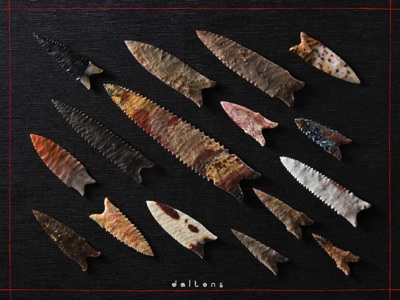Surprising Continuity of Ancient Technologies
[Translations: Japanese]
I get a new computer every couple of years. I go through digital cameras even faster. My desktop software updates itself every month or so. There’s almost nothing in my entire house older than I am. We take the rapid turnover of technology for granted. We assume that our living rooms reflect the state of technology in general, but we assume wrong.
There’s a surprising continuity to ancient technologies. One of the unexpected consequences of modern technologies is the counterintuitive way it keeps older, classical manual techniques going. Gadgets and appliances, modern farm productivity, five hundred communication channels, and all the rest of modern life have given us not only a means to learn old crafts, but also the leisure to practice them. I’ve heard some experts estimate that the number of contemporary sword makers and blacksmiths at work today equals the numbers of sword makers and blacksmiths working several hundred years ago. Beside our current leisure mode which encourages amateur enthusiasms, our larger population inflates the total numbers of crafts folk (while the percentage is decreased). The same claim is made about telescope makers, quilters, stain glass makers – that more of them are alive and producing today than ever before. I don’t have any data on those figures (if you do, please email me) but in my search for evidence of these claims I came across one group practicing probably the oldest technology in human history – flint knapping. This is the art and craft of turning stone into arrow and spear points.
Surprisingly, a very large number of new stone points are made every year – by precisely the same ancient hand method as used by Neolithic hunters. My source in this research is John Whittaker, author of American Flintknappers, or Stone Age Art in the Computer Age. Whittaker is an archaeologist who specialized in studying arrow points, including the famous Clovis point, which is used to date archaeological findings. Whittaker’s method is to try to replicate the technology of stone knapping himself. He takes a hunk of flint, a hide mat, an antler bone and begins knapping new stone points. Over time he could replicate a Clovis point. He is not alone. He discovered a subculture of other amateur point makers. To his fascination and concern he met hundreds of people busy creating thousands of new stone points each year.
Many of these modern-day flintknappers were history buffs, interested like Whittaker, in technical understanding how arrow tips are made. Others were survivalists eager to acquire a skill for making their own bows and arrows from scratch. For instance it is not too difficult to make an arrow head from a broken glass bottle. Still others were knappers who got very good and found they could sell their arrowhead reproductions for a good price. Whittaker was alarmed by this last group because the reproductions were VERY good. The amateurs had learned how to shape flint into any type of point they wanted to, in such detail and authenticity that Whittaker – a point expert himself – found it hard to tell the new ones from the old. If they could fool Whittaker, they could fool folks on eBay, where there are usually forty pages of arrow points for sale. Most of the people knapping are honest and not trying to pass their work off as ancient, but intermediates who buy from them aren’t so reliable. The crucial point is that the techniques used today seem to be identical to those used long ago.

Whittaker tried to estimate the number of new points made each year in modern American. From the circulation total of subscribers to flintknapping newsletters and workshops, and the sale of his own how-to books on the subject he estimated the total number of people making stone-age points today is about 5,000. Some of these are weekend hobbyists, some are academics and some are “pros” selling their creations. Whittaker then used surveys and other rough guesses to estimate how many points these fans generate in one year. His astounding guestimate is 1.5 million.
I asked Whittaker to take a stab at guestimating how many points may have been made in America before the gun arrived. Out of a population in North America estimated to be between 3-10 million, he guesses maybe 1 million were active hunters. Calculating how many points a year a hunter uses is more problematic. Whittaker says,
I don’t know any ethnographic estimates of points used per year. We recovered 261 points from a small Sinagua site occupied by 2-4 families sporadically over 200 years. Grasshopper, a large pueblo in central AZ, occupied by maybe up to 500 people for about 100 yrs, and about 1/5 excavated, produced several hundred points. Many points might have been lost in the woods or traded away etc. If we make a guess to play with, let’s say each hunter breaks, loses, and replaces one point per week. That’s 50 million points in a year.
So it turns out there are far fewer people making arrowheads today. But modern flintknappers are way more productive than their predecessors, Their points are more art than tool. But the old ways continue. If you would like a very nice chert knife secured tightly to a bone handle, you can find one on eBay for $50. When you see a brand new Clovis point, first made 13,000 years ago, for sale at a knappers convention (called a knap-in) you realize the stone age is actually not dead.
Until the 1970s, the Dani tribesmen in Baliem Valley in Papua New Guinea used axes they quarried from dark stone. They still make them now 30 years later for tourists. Technologies die hard.


